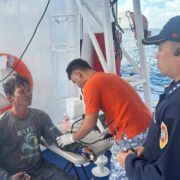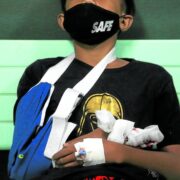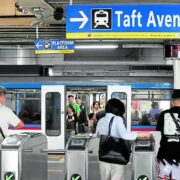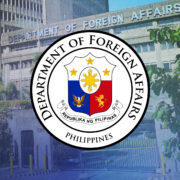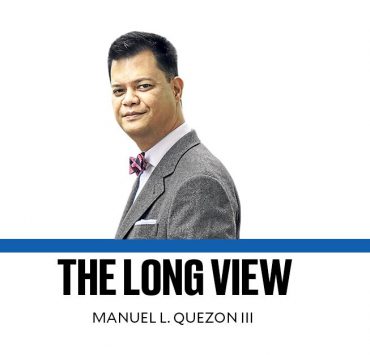Our unsafe roads

It is the height of irony that just as the Philippines began observing Land Transportation Safety Month, a series of fatal road mishaps occurred, including two tragic vehicular accidents that happened just days apart, claiming 12 lives, injuring dozens more, and damaging property.
The video of an overseas Filipino worker crying out in anguish after a wayward SUV killed his 5-year-old daughter just moments after he kissed her goodbye at the Ninoy Aquino International Airport (Naia) were so gut-wrenching that it spurred the government to action.
“We need to make the people feel safe on our roads again. This is the sad reality … and this needs to change now,” Transportation Secretary Vince Dizon said, adding that both the government and the bus companies “have failed the commuting public.” President Marcos, he said, “demanded action.”
Last Monday, Dizon issued a department order mandating the regular alcohol and drug testing for drivers of all public utility vehicles (PUVs) including jeepneys, buses, trucks for hire, UV Express vans as well as cars used by ride-hailing apps and motorcycle taxis.
The Department of Transportation (DOTr) directed the operators and owners of PUVs to make sure that their drivers who are responsible for the safe transport of passengers are free from drugs, alcohol, and similar substances that can impair their driving.
The DOTr likewise ordered that all PUV drivers be subjected to a drug test every six months, starting from the date of employment and submit to random drug tests “whenever there is reasonable suspicion of drug use.”
Maximum driving time
Failure to pass or submit the test results during inspections will mean confiscation of their driver’s license and impounding of their vehicle. Meanwhile, failure on the part of the owners and operators to implement these new rules will mean possible cancellation of their permits to operate PUVs.
While these new rules drew some protests, the DOTr is right on track to order the reduction in the number of hours that drivers can man the wheel of public utility buses to four straight hours from the current six to avoid fatigue.
The policy, already being observed in other countries in Asia and the European Union, is a response to the May 1 tragic incident where a Solid North bus plowed into vehicles at a toll booth along the Subic-Clark-Tarlac Expressway, killing 10, including children, and injuring 37 others. That the driver was believed to have fallen asleep at the wheel brought to light possible violations of the current policy on maximum driving time.
The DOTr directive also directed the Land Transportation Office (LTO) and the Land Transportation Franchising and Regulatory Board (LTFRB) to consistently implement “clear, strict, and enforceable” rules to ensure that all PUVs are roadworthy, to avoid accidents resulting from failed brakes or badly maintained vehicles that should be kept off the road.
Ever-present fixers
Part of the sweeping reforms is the mandate of the LTO to improve driver training and education to ensure that only those who are worthy will earn the license to drive, with higher standards to be imposed on those who will be designated as professional drivers handling PUVs and larger vehicles such as delivery trucks.
Dizon himself said that the current licensing system was a “sham” as drivers could easily get their licenses without having to go through a legitimate written and practical driving exam, which should therefore not surprise Filipinos that there are too many “camote” or unprofessional drivers on the road, posing a real risk to life and limb of others.
“Road safety depends on qualified, skilled, and law-abiding drivers. They are the only ones who should possess the license to drive,” said Sen. Grace Poe.
That too many have the licenses even if they are unqualified can be blamed squarely on corruption, with money being paid under the table to secure the license via the ever-present fixers.
Mindset of safety
Corruption is the same culprit that can be blamed for the installation of allegedly substandard bollards at the NAIA. Mr. Marcos has already ordered an investigation into these supposedly substandard bollards that were installed during the time of former President Duterte.
The DOTr, LTO, LTFRB and other government agencies must be serious this time in implementing transportation safety rules even after public sentiment on the SCTEx and Naia accidents has died down. It is indeed only in strict implementation of these rules and the consistent application of sanctions that a mindset of safety and responsibility will be developed.
And as the government does its part, drivers of both public and private vehicles should be accountable too, and exercise personal responsibility. This thus means following basic but essential rules, from not texting or calling or driving, not driving when tired, sleepy, or drunk. Do not give in to road rage and follow road signs.
By following these simple rules and complying with DOTr directives, everybody will be able to get to their destinations in one piece. Making our roads safe is everyone’s responsibility.





